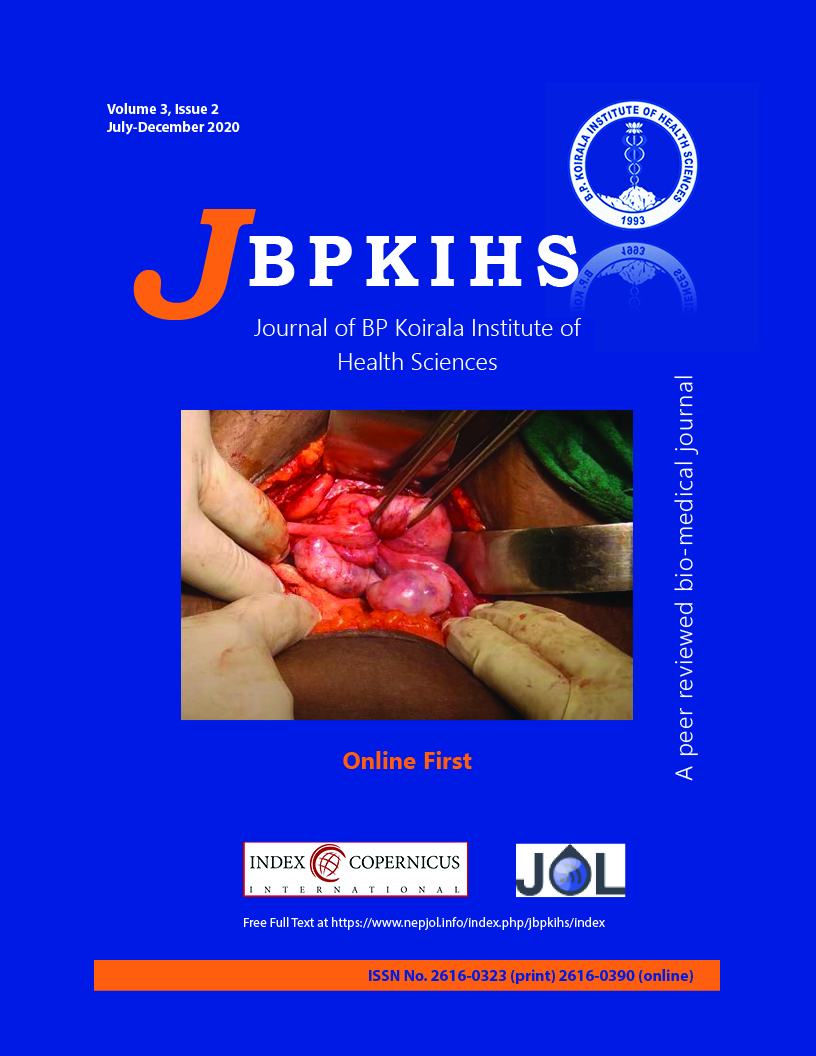A Hospital-based Cross-sectional Study to Assess the Pattern and Trends of Partial Edentulism in BPKIHS and its Teaching Districts
DOI:
https://doi.org/10.3126/jbpkihs.v3i2.36051Keywords:
Kennedy-Applegate classification, partial edentulism, socio-demographic, socio-economicAbstract
Background: Partial edentulism is the state of loss of one or more but not all natural teeth. Edentulism can affect the esthetics of an individual and can have a negative psychological impact. Recording the frequency of partial edentulism and its nature along with its association with different socio-demographic parameters helps to plan the treatment need and goals of the population in that locality. This cross-sectional study was conducted to find out the frequency of partial edentulism among the patients visiting the dental college of BPKIHS and its teaching district hospitals.
Methods: Two hundred partially edentulous patients were selected from four hospitals by purposive sampling and their socio-demographic parameters recorded. Intra-oral examination was done to classify partial edentulous spaces according to the Kennedy-Applegate system. Data was analyzed in SPSS version 11.5 and chi-square test was used to determine the association between independent (age-group, gender, socioeconomic status) and dependent variables (number of missing teeth).
Results: In both the arches, Kennedy’s class III was the most prevalent type of edentulism. In the maxillary arch, 44.5% had Kennedy’s class III edentulism whereas in the mandibular arch 34.5% had Class III. Kennedy’s class IV was least common (4% in maxillary arch and 6.5% in mandibular arch). Forty-five partially edentulous patients above 50 years of age had ≥ 4 teeth missing and 140 were from medium socio-economic status.
Conclusion: Kennedy’s class III partially edentulous arches were the most prevalent type of edentulousness with periodontal disease as major etiology. It was also seen that people with medium socio-economic status were more affected by tooth loss.
Downloads
Downloads
Published
How to Cite
Issue
Section
License
This license enables reusers to copy and distribute the material in any medium or format in unadapted form only, for noncommercial purposes only, and only so long as attribution is given to the creator.




